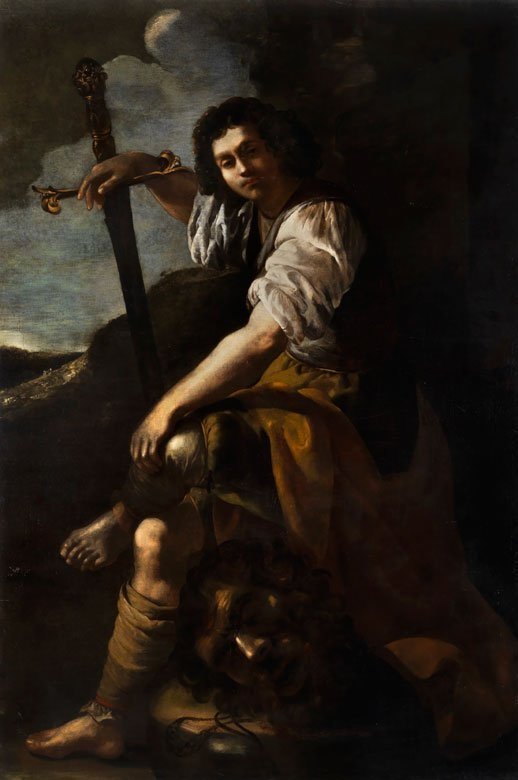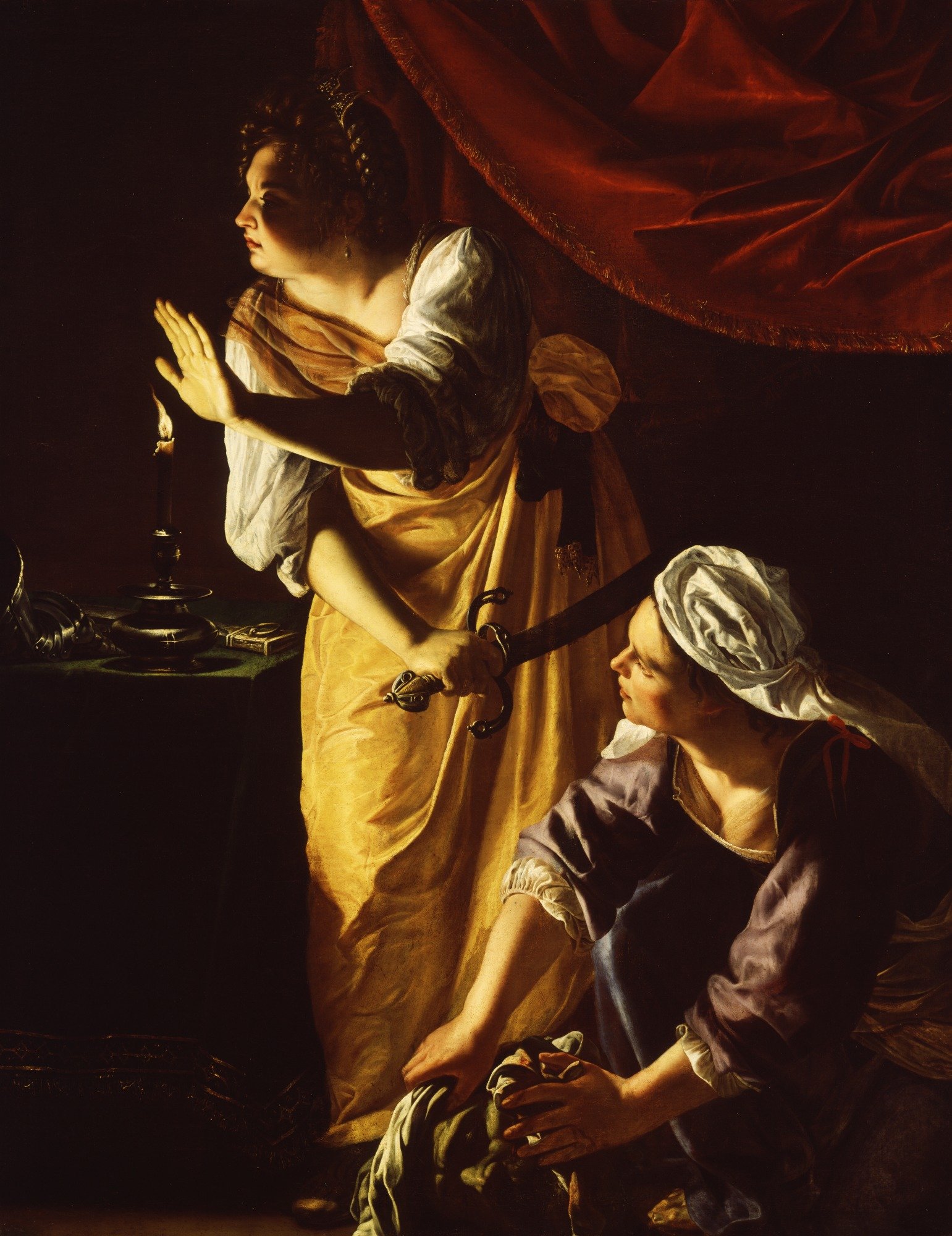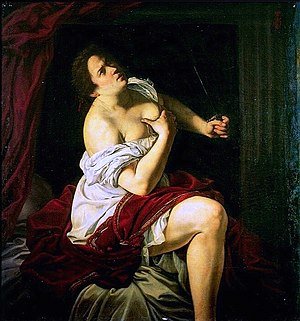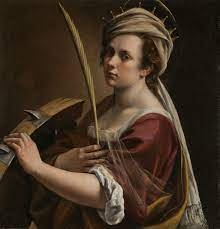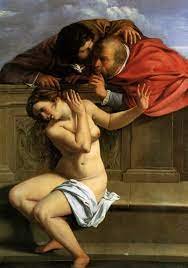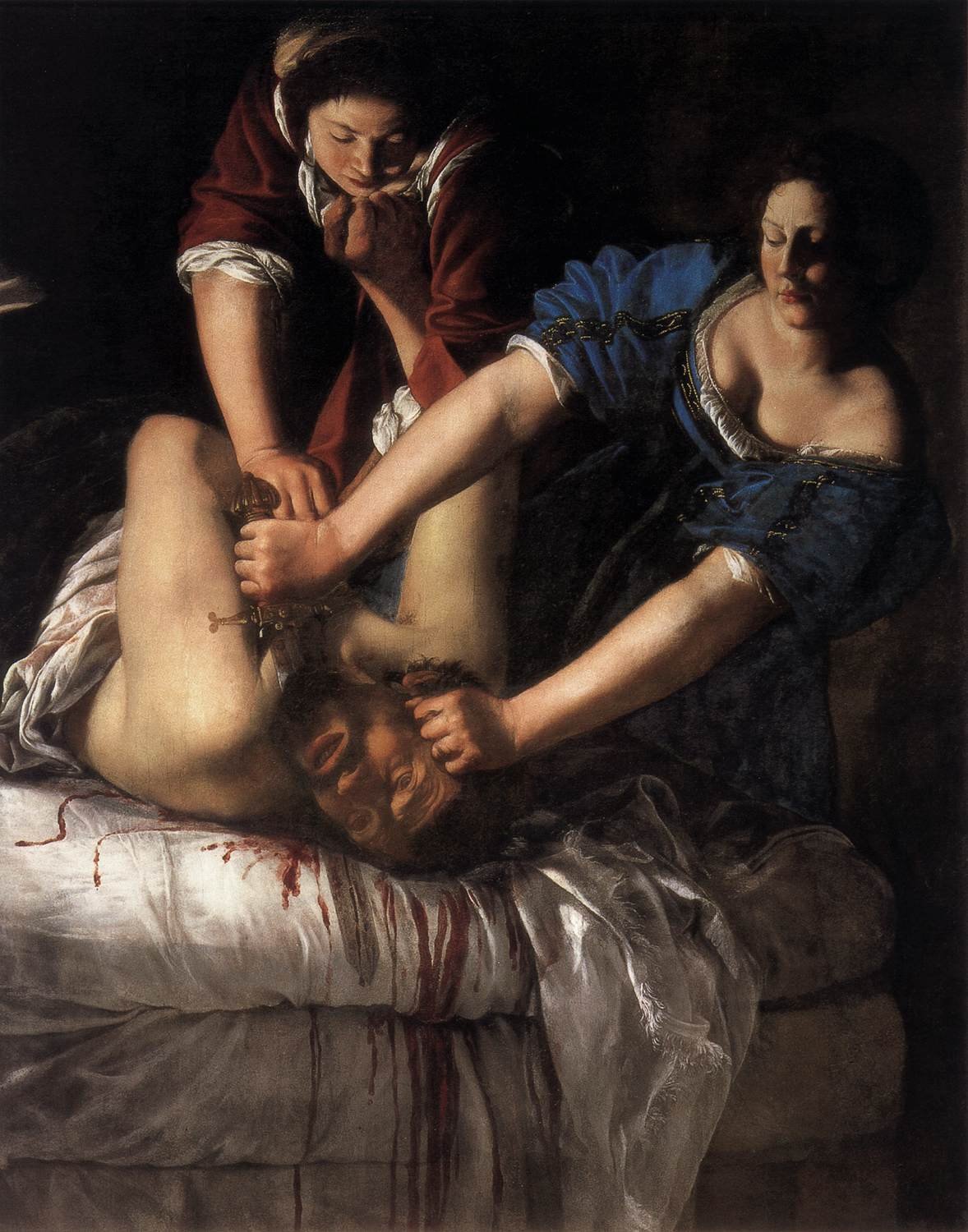As a content warning, this postwill briefly mention sexual assault and physical torture, but we’re not going to fixate on it.
If I had been asked as a child to list the most interesting artists of the Renaissance, it would have been a cast list for the Teenage Mutant Ninja Turtles. Michelangelo, Leonardo, Donatello, and Raphael. While towering figures in the arts make for the perfect allegory of apex teenage turtle masculinity, giants like these have a tendency to overshadow other less-studied figures.
Great Man theory is a method of understanding history with the idea that certain individuals were born with or developed the traits necessary to alter the path of history. In addition to overlooking the innumerable contributions to history made by everyone, the theory’s name also spells out the bias of gender expression that overwhelmingly defines this group of great men. The trouble is that the more history gets published about a certain event or figure, the more likely that more exploration of the topic will happen(1). As it happens, interest in the 17th century artist Artemisia Gentileschi really took off during the peak of second wave feminism in the 1970’s.
Self-Portrait as the Allegory of Painting (1638-1639)
Scholarship surrounding Gentileschi suffers from some of the same drawbacks to the Great Man approach to history as well as the politics(2) of the era. Feminist art historians were keen to contribute to a larger body of work(3), but it leaves me with a nagging feeling. So much of the discussion is beleaguered in attempts to portray the narrative of Gentileschi’s life and the impact of her work to make a point. There are plenty of points of debate that deserve discussion, but I hate to see a beautiful and meaningful lifetime of creativity and resolve trapped in a perpetual ideological tug-of-war.
Ok, so I’m clearly frustrated in my research. It’s difficult to talk about a female artist in the 17th century without making a whole thing about it(4), so here’s the facts as I see them. In the context of today, Artemisia would be considered a child prodigy, selling her work professionally by her mid teens. Her father, Orazio, was an established artist who ensured she learned to paint. She lived past 60, which is pretty wild for a single mother(5) of that period, and there’s evidence she was accepting commissions until almost the end of her life. Her early career was tragically overshadowed for a time by a lengthy and brutal trial concerning her sexual assault at the hands of a fellow artist. He was sentenced to exile from Rome, which was never carried out, whereas Artemisia was tortured with thumbscrews to verify her testimony(6).
The Inscription reads: “Made in Rome by Pierre Dumonstier, Parisian, the last day of December, 1625, after the worthy hand of the excellent and skilful Artemisia, gentlewoman of Rome. The hands of Aurora are praised and renowned for their rare beauty. But this one is a thousand times more worthy for knowing how to make marvels that send the most judicious eyes into raptures.”
Artemisia was a court artist in Florence(7), and found success back in Rome, London(8), and then Naples. Her foundations were set by her father’s style to avoid idealizing the human form, but she displayed a fluidity of style that changed to fit the tastes and techniques of the specific areas she was working in.
Gentileschi had a tendency to insert her own image into the roles of her subjects(9), which tend to favor the Power of Women trope(10) of medieval and renaissance Europe. By and large though, she has all the hallmarks of what we would think of today as a professional working artist. She occasionally created for herself but often painted subjects that she would be able to sell. With cultural patronage as it was(11), she was able to build a stable life for herself despite the instability inherent between her chosen path and her expected role in society. In her own words, in a letter to a potential patron, "with me Your Illustrious Lordship will not lose and you will find the spirit of Caesar in the soul of a woman."
(1) Good history is written from primary source documents. However, these secondary sources can serve as inspiration to spark further interest in a specific subject as well as a source for later histories to cite. Generally the more secondary sources cited by any academic works, the more you ought to look at exactly what those sources and their authors are all about, and this has been today’s lesson on lateral reading and research.
(2) Just like good comedy, good history doesn’t punch down the power structure of society. Whenever you find yourself confronted with an opinion or interpretation of fact, ask yourself who the story benefits and, more importantly, who it harms, and this has been the last lesson today about lateral reading and research I pretty promise unless I think of something else.
(3) One of the only secondary sources available about Artemisia Gentileschi from before this time was written by Roberto Longhi in 1916, which included such hit passages (hot takes) as:
“Who could think in fact that over a sheet so candid, a so brutal and terrible massacre could happen [...] but—it's natural to say—this is a terrible woman! A woman painted all this?”
You can see why this discussion perhaps stood to benefit from a more diverse set of perspectives.
(4) A problem that frankly just literally wouldn’t exist in nearly the same way if we were discussing a man.
(5) She did marry during her time in Florence, had an affair with a patron her husband knew about and supported because Mr. Patron was loaded and influential. A while after they returned to Rome, her husband just stopped appearing in any documentation related to Artemisia, but she does seem to have maintained close ties with her single surviving child, Prudentia.
(6) I do love a fair trial. Then and now. But seriously, putting an artist in thumbscrews feels particularly brutal, since her hands were literally part of her livelihood. A cool thing though is that Pierre Dumonstier drew a portrait of her right hand with the inscription: “Made in Rome by Pierre Dumonstier, Parisian, the last day of December, 1625, after the worthy hand of the excellent and skilful Artemisia, gentlewoman of Rome. The hands of Aurora are praised and renowned for their rare beauty. But this one is a thousand times more worthy for knowing how to make marvels that send the most judicious eyes into raptures.”
The drawing is at the British Museum but not currently on display. You can see it on their website with the ID Nn,7.51.3 and it’s worth it.
(7) It’s interesting and worth noting that she casually had an ongoing correspondence with Galileo Galilei, which isn’t super relevant to her career as an artist, but like hot damn it seems like her squad would have been absolutely epic to bop around with in Florence.
(8) Up until Charles the First started a civil war over having overly-fabulous hair and underly-fabulous appreciation for the democratic process. I do however like how wealthy despots of the time did at least spend lavishly on the arts.
(9) Some of her most recognizable work is of women taking righteous revenge on men, understandably leading to theories that maybe her work became part of coping with her trauma. Looking at the wider body of her work, commissioned or not, it seems to me that her preferred subject could be more broadly described as that of female joy and success. It’s only sometimes that it comes at the expense of some guy’s severed head ¯\_(ツ)_/¯
(10) This is actually a pretty fun thing to look into. Expressions of the trope range from silly to serious, the latter as is the case in the work of Gentileschi, but always follows a theme of subversion. It reminds me in concept of Saturnalia, the Roman festival ~December 17th that inverted many social and legal norms for a week. I think it’s healthy for a society to set aside existing norms to question why we do the things we do and explore alternatives.
(11) Notably, Artemisia Gentileschi, did very little work on behalf of the church either in Catholic Italy or Protestant England. Maybe because religious art trends were focused on less in the way of paintings done at the easel. But she seems to have been very well known to wealthy patrons of the secular variety.




